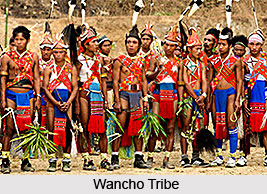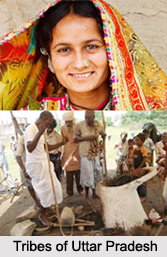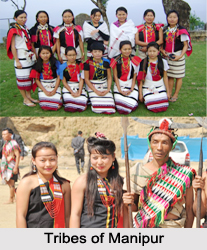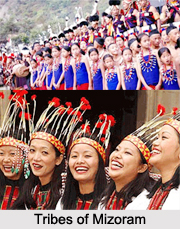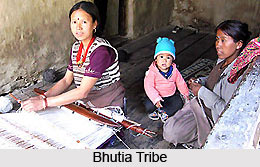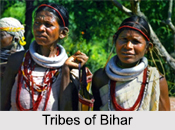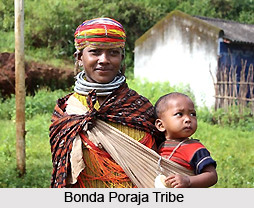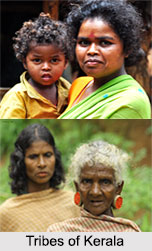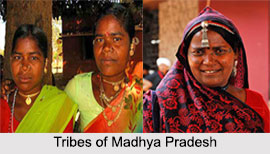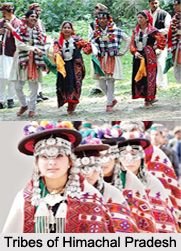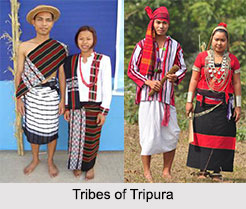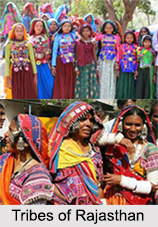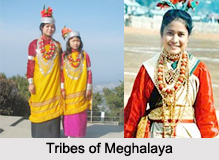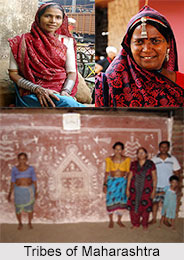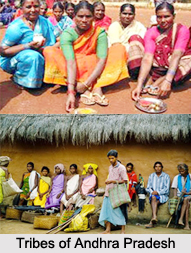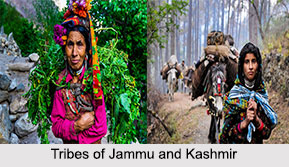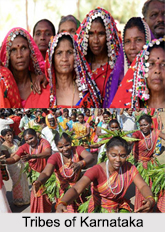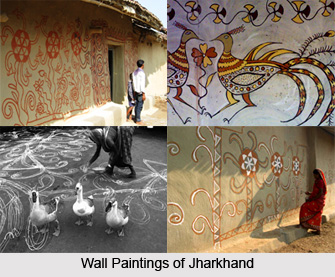 Religion of artisan tribes are divided into several categories: Nature worship, ancestral worship, sacred geography, sacred specialist, holy performance and black magic.
As per their beliefs super human powers take abode on tree, mountain, mud hill, roof of the tree, in river, well. There are malevolent or benevolent spirits and both of them are worshipped.
Religion of artisan tribes are divided into several categories: Nature worship, ancestral worship, sacred geography, sacred specialist, holy performance and black magic.
As per their beliefs super human powers take abode on tree, mountain, mud hill, roof of the tree, in river, well. There are malevolent or benevolent spirits and both of them are worshipped.
Nature Worship
Artisan tribes generally live in and around the forest since time immemorial. They worship sal tree and karam tree on religious occasions. Animals like cow, ox, buffalo, are worshipped on the occasion of Sohraj festival. Totemic plants and animals are revered after whom they establish clan group. It is strictly prohibited to eat and kill totemic objects. Rivers, mountain, big piece of stone, pond, old tree, mud hill, root of dried tree, are also considered as abode of different spirits and they are worshipped on different occasions. Worship of sun, Dharmesh or Singbonga and earth forms a part of nature worship. The worship of Sarana grove is also nature worship.
Ancestral Worship
According to the beliefs when an individual dies, his or her soul attains the status of ancestors. They are treated as family gods and goddesses. They also Artisan tribes believe that ancestors are responsible for good and bad events taking place in the family. According to the beliefs ancestors are attached to their descending families. The Artisan tribes offer worship to their ancestral spirits on various occasions in order to show respect to their ancestors. They also believe that their ancestors reside in Sarana grove, old tree, in the root of dry tree, or in the outer wall or roof of the house. They are offered worship on the occasion of birth, marriage and death in the family. Goats, cocks, hens, chicks, ducks or pigeons are sacrificed.
Sacred geography
Artisan tribes treat certain parts of their village land as sacred and these parts of land are considered as abode of deities. According to their beliefs different spirits make reside in sarana grove. The mud hill, the root hill of old tree, big piece of stone, stone slab, old tree, thick bushes, river, pond, well, burial ground are treated as sacred place by the tribes. The abode of Hindu Gods and goddesses are treated as sacred place. Sacred geography consists basically of different religious places that are recognised as abode of different spirits. According to them Dharmesh or Singbonga is the supreme deity who controls the entire universe who makes his abode on a mud hill, stone hill, tall tree or deep pond that is situated in or around the village. Dharatimata is his wife who according to their beliefs makes her abode everywhere in the form of tree, plant, animals and so on.
Sacred specialist
The Artisan tribes take the help of sacred specialist at the time of offering worship to various spirits. The eldest women of the family perform the work of sacred specialist. She takes sunfried rice, dubgrass, haldi, water, jaggery, flower; incense sticks and offers worship in the name of spirits. Sacred specialist is needed for community level worship. In a mixed village the pahan of village performs the works of sacred specialist.
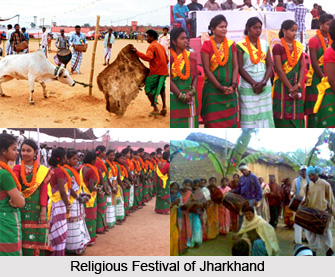 Sacred Performance
Sacred Performance
Sacred performance can be seen on occasions like death, marriage and festivals. This takes place for the fulfilment of a desire or to prevent the spread of epidemic in the village. For a sacred performance in the family level the decision is taken at family level and the expenses are met by the family. For sacred performance in the community level decision is taken at community level and the expenses are met by the members of the community. On festive occasion in order to deliver previous promises sacred performance takes place at family level. The objects used for sacred performance are sun fried rice, ginger, dubgrass, ghee, vermilion, colour, curd, sal leaves, karam leaves, flowers available and incense sticks. The sacred performance takes place in the name of Dharmesh, Dharatimata, Gramdevata, Gramdevi, evil spirits, ancestral spirits. On the day of sacred performance the abode is washed with mud, cow dung and water. The animal that would be sacrificed is brought for a purificatory bath in the river. The abode is decorated with leaves, flowers, dubgrass, sunfried rice, ginger, dyes.
For village level sacrifice, a pig is purchased. The village priest pahan sprays water on the abode and enchants mantras. Ghee, vermillion sun dried rice, curd are offered on the abode of the spirits. Thereafter the sacrificial animal is brought nearby the adobe. The sword is put on the neck of pig or goat by the expert. When this sacrifice is over, then each head of the households offers sacrifice of a chick or pigeon or a duck. After sacrifice a feast takes place.
Sacred performance on death
Artisan tribes observe pollution period when some one has died. However rituals vary from tribes to tribes. The Lohare observe it for three days, the Karmali observe it for ten days and the Chick Baraik observes it for eleven days.
Sacred performance on marriage
On a marriage occasion the sacrifice is made in the name of ancestral spirits. It is believed that ancestral spirits visit to see the marriage ceremony in the family. It becomes the obligation of the family to offer sacrifice in their names for successful marriage. When the marriage is over a date for the sacrifice is fixed with the help of pahan. The news of sacrifice is communicated to all kiths and kins. For the purpose of sacrifice a goat is purchased. The pahan mediates between the family and the ancestors. The sacrifice is made where ancestral spirits are supposed to take their abodes. The head of the household takes the rope of the goat in his hand. Other members of the family assemble with mander and dhol.
Sacrifice on festive occasion
Sarhul is an occasion when a goat is sacrificed and shared by the members of the community. Sacrifice on festive occasion takes place at village level.
Sacrificed on spread of epidemic
Epidemic like pox and cholera break in the village along with cattle diseases. According to beliefs when some spirits become angry such diseases spread in the village. They offer sacrifice in their names in order to please spirits. Funds are raised to purchase goats and cocks. The fast is broken after the sacrifice is over. Thereafter the sacrificed animal is cooked and shared by the villagers.
